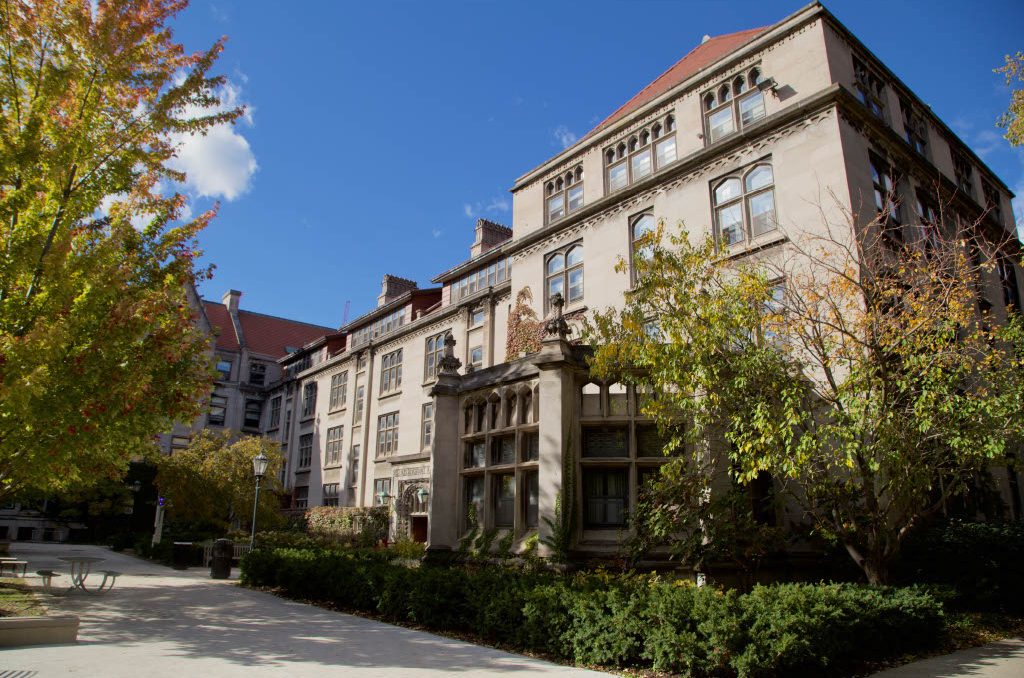When I look at the corner of East 61st Street and South Dorchester Avenue, I see a section of campus that should be considered sketchy and unsafe. After all, it backs up to the Metra tracks, contains a series of dead-end roads, and often looks desolate and untraveled. But it isn’t. Instead, this less-than-majestic corner is probably the most successful corner for community development in the neighborhood, and I attribute it in large part to the community garden that has existed there for more than a decade. During my almost 10 years in Hyde Park and Woodlawn, I have seen few other spots where students, staff, faculty, and community members have come together with common goals and helping hands.
As a member of the garden for the last few years, I have formed friendships with faculty members and neighborhood residents as we all dig rows in the spring rain and pull weeds in the summer heat. I have shared the bounty of my small plot with curious passersby and been invited to taste more than one pizza baked in the garden’s oven while I watered my plot. The garden has become the place on this campus where socioeconomic and racial differences stop colliding. Anyone who visits is welcomed with a smiling face and sent on their way, having learned a little bit about how food and flowers are produced, and many leave with some samples in their bellies or arms.
In recent years, I have watched and enjoyed as the garden has provided the perfect backdrop for the activities of the revitalized Experimental Station. And without the garden behind it, the 61st Street Farmers’ Market would not be nearly as welcoming an environment for families and friends to gather. Backstory Café, Blackstone Bikes, and the rest of the Experimental Station’s projects would seem distant, at the end of an empty 61st Street, if the garden were not serving as their gateway.
Yet on October 30, the University has stated that the garden must end. The space is needed for the staging area of the new Chicago Theological Seminary Building. While I won’t chain myself to any fences and will pack my shovels and tomato cages up without much fight, I must ask why the University would destroy such a vibrant community that is thriving. Sure, they’ve offered to help move us to other areas, but can you preserve a community when you divide it up and portion it out onto smaller city lots? How will the feeling of great community resources like the Experimental Station and Saturday’s Farmers’ Market change when they reside beside construction trucks and then a vacant lot rather than the flowers, birds, and the community that have grown with them?
My entire time here, I have been told that the University wants to build a community with its neighbors, but more and more I question the validity of that statement. We finally have a corner of campus everyone can use and enjoy together, a corner that could be the center of our initiatives to reach out to Woodlawn. Yet, with little discussion, the quiet gem that holds it all together is being closed down to make way for a vacant lot. All this is occurring at a time when the message we keep hearing is about reaching out to the Woodlawn community to our south and working toward developing greater community relations and safer streets.
I won’t tell the University it can’t have the land back; but I wonder as I watch trucks drive down there each day from the library project why the staging site couldn’t be moved to one of the many already vacant lots on 61st Street. No one wants to stand in the way of progress and development at the University, but anyone who has walked near the garden knows that some things are worth the small cost of preservation.
Laura Staley graduated from the College in 2004 with a degree in sociology.







